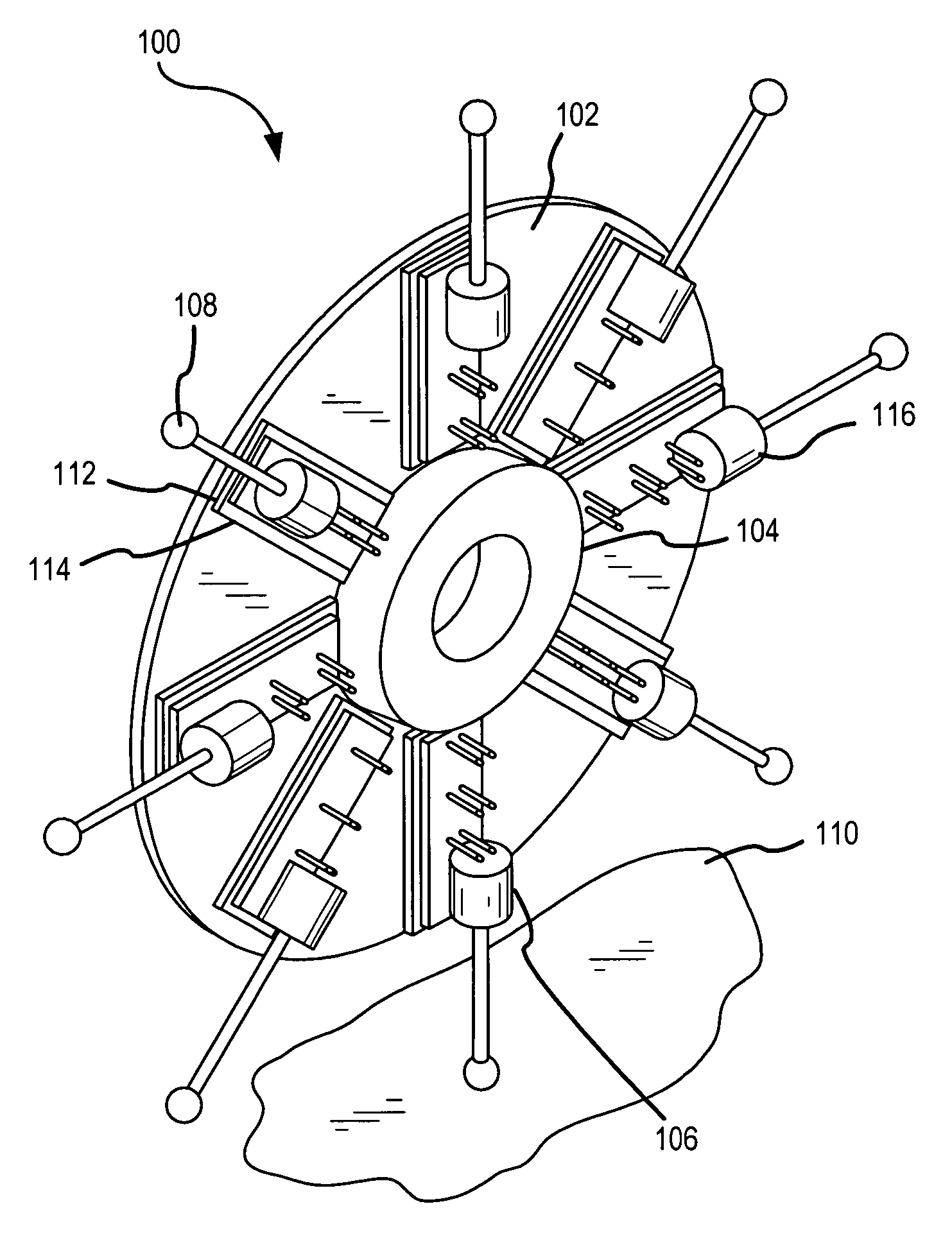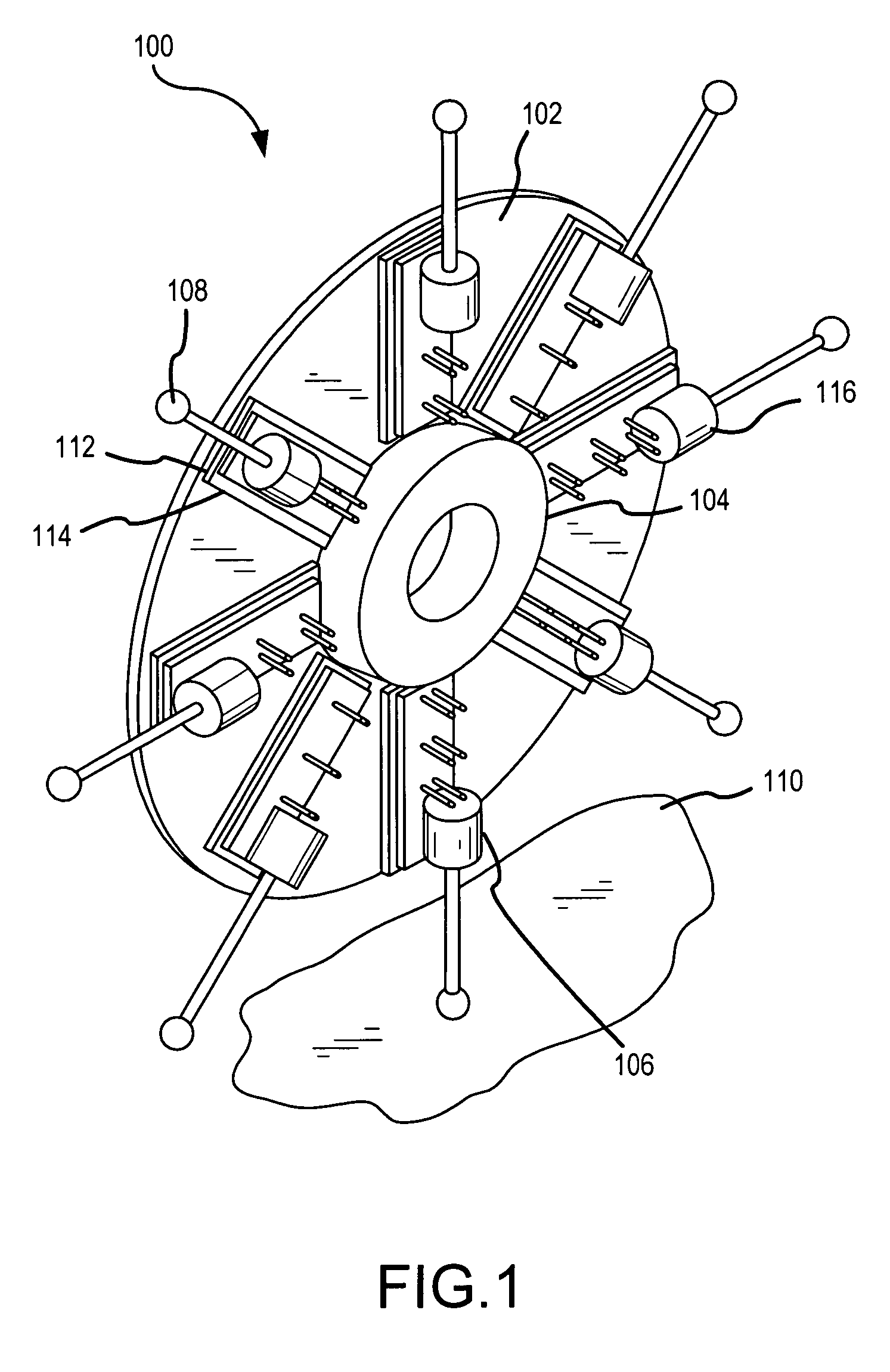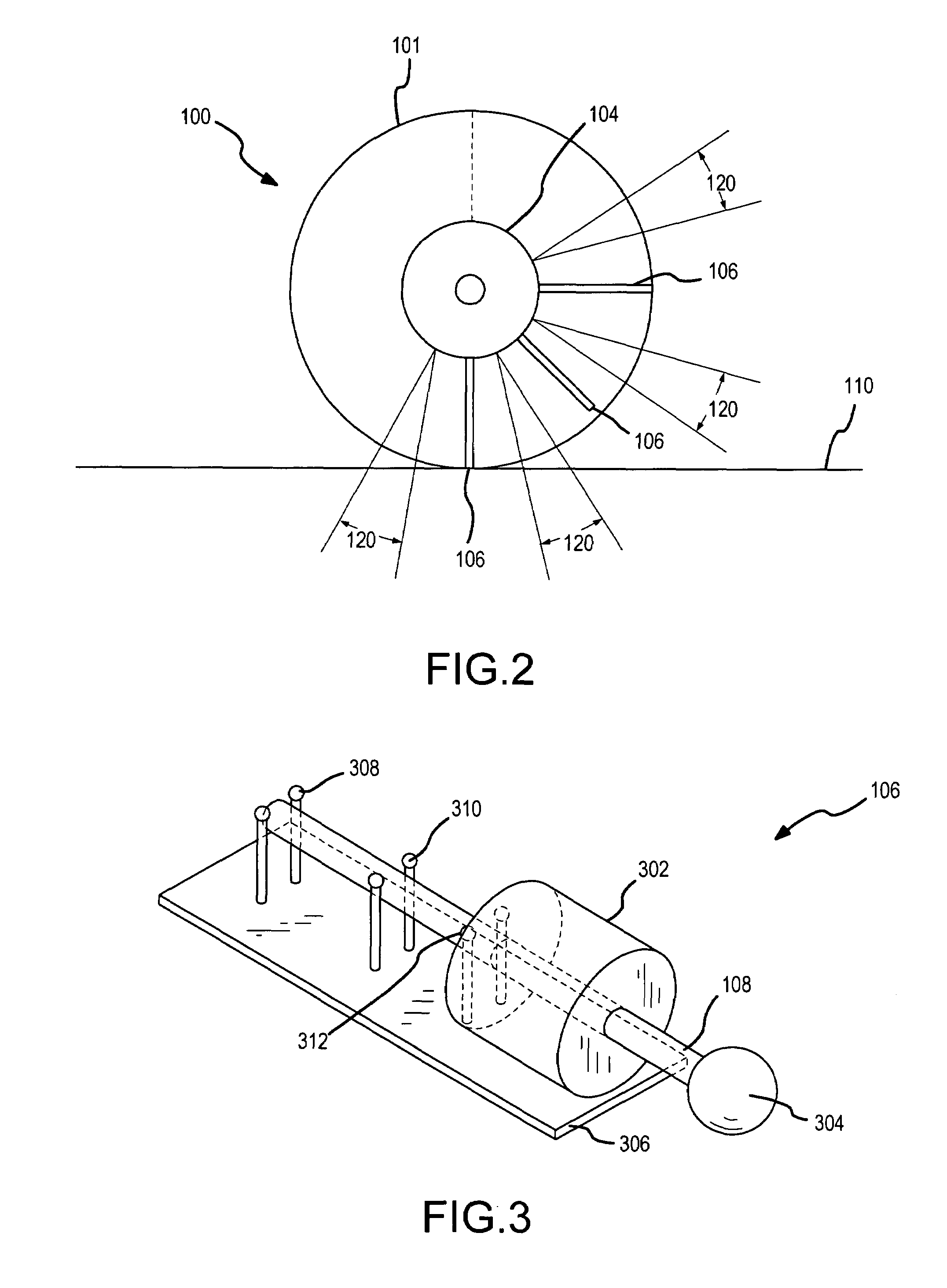Stair climbing platform apparatus and method
a platform and stair technology, applied in the field of vehicles, can solve the problems the difficulty of the wheeled platform navigating over uneven terrain, and the difficulty of the wheeled platform traversing obstacles, etc., and achieves the effect of increasing the power requirements of the system and the complexity of the robotic system outside the modern factory floor
- Summary
- Abstract
- Description
- Claims
- Application Information
AI Technical Summary
Benefits of technology
Problems solved by technology
Method used
Image
Examples
Embodiment Construction
[0021]An intelligent wheel 100 in accordance with one embodiment of the present invention is shown in FIGS. 1-9. Referring now to FIG. 1, this wheel 100 has a generally disc shaped support portion 102, a central hub 104 about the center of the support portion 102, and a series of radial spoke mechanisms 106 fastened to the support portion 102 and positioned equally spaced around the central hub 104. The spoke mechanisms 106 are dynamically controlled by a controller that controls extension of the spoke or spokes 108 which are supporting the hub 104 at any given time so as to effectively increase or decrease the wheel radius, thus raising or lowering the center of mass of the wheel 100 and its load as it approaches and encounters an obstacle or change in the surface 110 on / over which it is traveling. In addition, the adjacent spoke or spokes 108, which is / are rotating down toward and onto the obstacle, can be extended, such as is shown in FIG. 7, such that they provide a grip point f...
PUM
 Login to View More
Login to View More Abstract
Description
Claims
Application Information
 Login to View More
Login to View More - R&D
- Intellectual Property
- Life Sciences
- Materials
- Tech Scout
- Unparalleled Data Quality
- Higher Quality Content
- 60% Fewer Hallucinations
Browse by: Latest US Patents, China's latest patents, Technical Efficacy Thesaurus, Application Domain, Technology Topic, Popular Technical Reports.
© 2025 PatSnap. All rights reserved.Legal|Privacy policy|Modern Slavery Act Transparency Statement|Sitemap|About US| Contact US: help@patsnap.com



